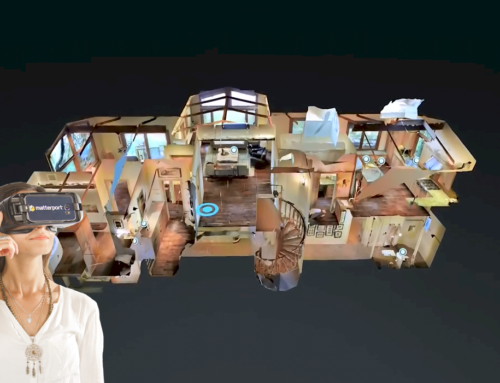Virtual Tours for Architects: Showcasing Projects, Monitoring Progress, and Conceptual Visualization
In today’s digital era, virtual tours have emerged as indispensable tools for professionals in the architecture and interior design field. These tours offer an interactive and immersive method to exhibit portfolios, engage clients, track project development, and deliver unforgettable experiences.
This article explores the transformative impact of virtual tours on the presentation of both completed and ongoing projects to clients by architects and interior designers.
Enhanced Presentation of Work
Virtual Tours Build Confidence
In a virtual tour, potential clients can be transported instantly into a completed project, thanks to high-quality visuals, 3D scanning technology, and interactive features. This immersive experience allows clients to examine every aspect of a finished project closely, fostering confidence in the architect’s expertise and vision.
Leaving a Lasting Impression
Virtual tours create memorable experiences for clients, enabling them to explore completed projects and envision their own spaces. This interactivity fosters a connection with the architect’s work, building trust and laying the groundwork for successful collaborations.
Effortless Sharing and Integration
Virtual tours, hosted online like websites, are easily shareable across various devices and can be seamlessly embedded in presentations and web pages. This accessibility empowers clients to share the architect’s work with stakeholders, facilitating quicker decision-making processes.
Visualizing Concepts – CGI Virtual Tours
Bringing Design Concepts to Life
CGI virtual tours provide architects and designers with a powerful platform to visualize design concepts interactively. Clients can navigate through different design iterations, gaining a comprehensive understanding of proposed concepts and facilitating productive discussions.
Facilitating Design Choices
Virtual tours empower clients to explore various design options and actively participate in the decision-making process, ensuring alignment between their preferences and the final design. This collaborative approach bridges the gap between architect expertise and client aspirations.
Real-Time Feedback
Virtual tours facilitate real-time feedback, allowing clients to provide comments and queries while exploring the space virtually. This feedback loop enables efficient adjustments and refinements, saving time and resources during project development.
Progress Tracking – Virtual Tours for Architects
Streamlined Progress Display
Virtual tours created at strategic milestones throughout a project keep clients informed about progress, minimizing disruptions and fostering transparency.
Collaboration with Virtual Tours for Architects
Features like data-tags enable stakeholders to spot and address issues remotely, enhancing clarity and expediting decision-making processes.
Remote Measurements
Integrated tools allow team members to take measurements remotely, facilitating tasks such as pricing estimates and risk assessment without physical site visits.
Enhanced Client Experiences
Beyond Static Presentations
Virtual tours offer dynamic showcases of designs, providing clients with immersive experiences that foster emotional connections and confidence in architectural work.
Progress Tracking – A Sustainable Alternative
Virtual tours enable remote client engagement, saving time and resources while reducing environmental impact.
Building Trust and Communication
By offering transparent and immersive experiences, virtual tours enhance communication and trust between architects and clients, fostering effective collaborations.
In Conclusion
Virtual tours revolutionize the presentation of architectural projects, offering interactive experiences that captivate clients and drive project success. Embrace virtual tours to effectively showcase projects and visualize concepts, fostering stronger client relationships and successful outcomes.








